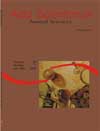<b>Ectoparasitos de tilápia do Nilo (<em>Oreochromis niloticus</em>), das linhagens Chitralada e GIFT, em diferentes densidades e alimentadas com dois níveis de proteína</b> - DOI: 10.4025/actascianimsci.v29i4.1015
Resumo
Foi verificada a infestação por ectoparasitos em tilápia do Nilo (Oreochromis niloticus), nas linhagens Chitralada e GIFT, em tanques e viveiros, utilizando-se ração com dois níveis de proteína. Durante o ensaio, foram analisados a temperatura, o pH, o oxigênio dissolvido e a condutividade elétrica. Foram realizadas amostras de raspados de tegumento e brânquias de machos pós-revertidos, em duas fases do experimento. A primeira, em 240 alevinos provenientes de 18 caixas de fibra de vidro de 500 L em três densidades. A prevalência total de parasitos na linhagem Chitralada (densidades de 30, 40 e 50 peixes m-3) foi 72,2, 83,3 e 59,5%, com predominância de Trichodina (38,9, 63,3 e 26,2%), respectivamente. Para a linhagem GIFT, nas mesmas densidades, foram observados 83,3, 73,3 e 80,9%, com maior predominância também de Trichodina (33,3, 73,3 e 45,2%), respectivamente. Na segunda fase, foram analisados 90 peixes de cada linhagem, de dois viveiros (140 m2) e duas dietas com 25 e 30% de proteína bruta. A prevalência total, para as linhagens Chitralada e GIFT com 25% PB foi 86,7 e 76,7%, respectivamente, e para 30% PB foi 60,0%, para ambas as linhagens. O nível de 30% PB, independentemente da linhagem, apresentou a menor prevalência parasitária.Downloads
DECLARAÇÃO DE ORIGINALIDADE E DIREITOS AUTORAIS
Declaro que o presente artigo é original, não tendo sido submetido à publicação em qualquer outro periódico nacional ou internacional, quer seja em parte ou em sua totalidade.
Os direitos autorais pertencem exclusivamente aos autores. Os direitos de licenciamento utilizados pelo periódico é a licença Creative Commons Attribution 4.0 (CC BY 4.0): são permitidos o compartilhamento (cópia e distribuição do material em qualqer meio ou formato) e adaptação (remix, transformação e criação de material a partir do conteúdo assim licenciado para quaisquer fins, inclusive comerciais.
Recomenda-se a leitura desse link para maiores informações sobre o tema: fornecimento de créditos e referências de forma correta, entre outros detalhes cruciais para uso adequado do material licenciado.








































